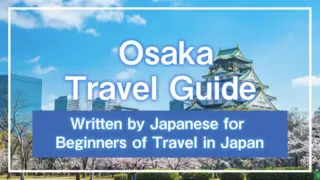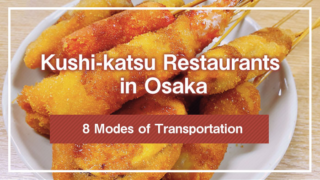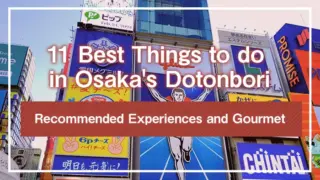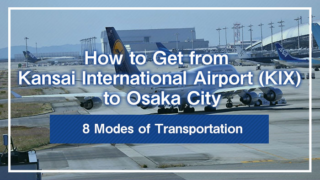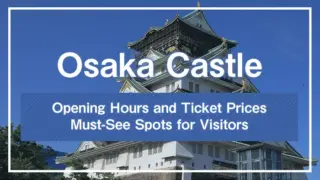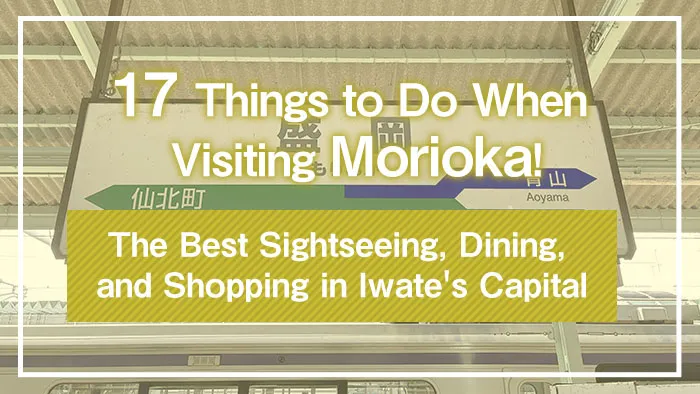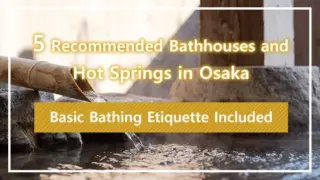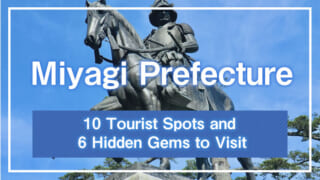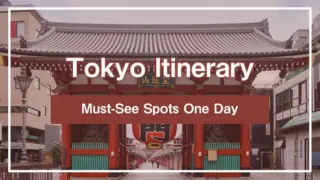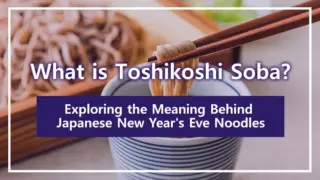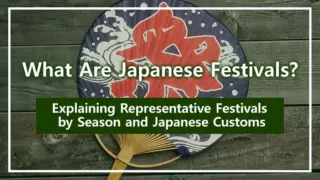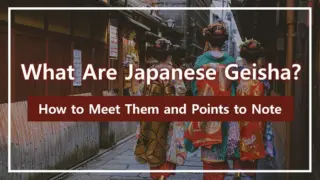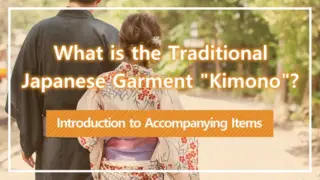While Tokyo and Kyoto are classic destinations for Japan travel, many local cities offer attractive alternatives. Among them, Morioka stands out as a city where nature and culture exist in harmony. Historic shrines, museums, local cuisine, festivals, and the rich natural environment captivate visitors.
This article carefully introduces 17 things to do when visiting Morioka, divided by theme. For those seeking Japanese attractions beyond urban tourism or looking for local experiences, Morioka will surely appeal as a travel destination.
- 1. What kind of place is Morioka, the capital of Iwate?
- 2. Things to Do When Visiting Morioka
- 2-1. Enjoy historical and cultural heritage at Morioka Castle Site Park
- 2-2. Learn more about history at the Morioka History and Culture Museum
- 2-3. Visit Morioka Hachimangu Shrine, the largest shrine in Iwate Prefecture
- 2-4. Appreciate art at the Iwate Museum of Art
- 2-5. Taste Morioka’s three famous noodle dishes
- 2-6. Savor Iwate beef
- 2-7. Enjoy premium sake at Asabiraki brewery
- 2-8. Enjoy beer at Baeren Brewery
- 2-9. Visit Morioka’s famous cherry blossom spots in spring
- 2-10. Enjoy fireworks festivals
- 2-11. Pray for good harvests, health, and peace at Morioka Sansa Odori
- 2-12. Enjoy the Chagu Chagu Umakko parade
- 2-13. Enjoy the Morioka Autumn Festival
- 2-14. Enjoy shopping in the commercial districts
- 2-15. View the northern city from 92 meters above ground
- 2-16. Go skiing around Morioka in winter
- 2-17. Relax at Tsunagi Onsen
- 3. How to get to Morioka
- Conclusion
1. What kind of place is Morioka, the capital of Iwate?
Morioka is a city located in the central part of Iwate Prefecture.Iwate is bordered by Aomori Prefecture to the north, Akita Prefecture to the west, and Miyagi Prefecture to the south. With so many neighboring regions, Morioka is an easily accessible destination when traveling through the Tohoku region.
Compared to famous Japanese tourist destinations like Tokyo and Kyoto, Morioka tends to have fewer tourists. However, the city offers multiple historical buildings, delicious cuisine, and beautiful scenery. Surrounded by mountains including Mt. Iwate, Mt. Akita-Komagatake, Mt. Hayachine, and Mt.Nanshō to the south, Morioka is enclosed by nature on all sides.
The city center features buildings constructed during the Meiji era, including the Iwate Bank Red Brick Building. These historic structures interact with the surrounding mountains and the Nakatsu River flowing through the city, creating a nostalgic townscape.
With its abundant charms, Morioka is worth considering as a destination to experience Japan’s regional culture.
2. Things to Do When Visiting Morioka
Morioka offers attractions including architecture, nature, and food. Before your visit, it’s helpful to understand what tourist spots and events are available to fully enjoy your trip.
Below are 17 things to do when visiting Morioka.
2-1. Enjoy historical and cultural heritage at Morioka Castle Site Park
引用:盛岡市
Morioka Castle Site Park is where Morioka Castle once stood during the Edo period, home to the feudal lord who governed the Morioka area.The stone walls and ponds remain, and today the park serves as a relaxation spot for Morioka citizens.
To experience the history within Morioka Castle Site Park, visiting the “Hiko Okura” building is recommended. This storehouse, believed to have housed tools during the Edo period, is registered as a tangible cultural property. Seeing the monument to poet Takuboku Ishikawa, a Morioka native, can also help you understand the city’s culture.
The park is also characterized by its abundant nature.Besides grassy areas, various plants including plum and cherry trees, wisteria trellises, and hydrangeas bloom in different seasons.
2-2. Learn more about history at the Morioka History and Culture Museum
引用:盛岡市
The Morioka History and Culture Museum is located in a corner of Morioka Castle Site Park.It was built to revitalize the area by utilizing the castle ruins and the central city district that was once the castle town.
At the museum, you can learn about Morioka’s events, history, and culture. For example, the permanent exhibition’s tourism exchange zone on the first floor displays festivals held annually in Morioka. You can experience the excitement of these festivals through displayed tools and actual festival footage.
The highlight of the second floor’s history and culture zone includes a reproduction model of Morioka Castle, along with weapons and costumes of the clan that ruled the land as feudal lords.Videos recreating the castle town during the Edo period are also shown.
2-3. Visit Morioka Hachimangu Shrine, the largest shrine in Iwate Prefecture
Morioka Hachimangu Shrine is a historic shrine said to have been founded in 1680.The entire worship hall where visitors pray is decorated with carvings of paulownia flowers, the prefectural flower. The shrine buildings are characterized by their vivid vermilion color.
A unique feature of Morioka Hachimangu Shrine is the presence of 12 shrines within its grounds, considered power spots.Each shrine enshrines various deities related to love, academics, safe childbirth, and family prosperity. The most popular among visitors is “Kasamori Inari Shrine,” said to bring good business fortune. Kasamori Inari Shrine existed before Morioka Hachimangu was established and has the longest history among the 12 shrines.
The doors of Morioka Hachimangu’s worship hall are never closed. They remain constantly open so visitors can worship at any time.
2-4. Appreciate art at the Iwate Museum of Art
#柚木沙弥郎展#永遠のいま 1994年以来、柚木さんは多彩な技法で多くの絵本原画を制作しています。展示室では、2004年に発表された、絵本『トコグーグーとキキ』の世界を立体的に表現したインスタレーションを再現。柚木さんが楽しんで作ったという、ユーモラスな指人形は必見です!pic.twitter.com/Oxrxaw0ROK
— 岩手県立美術館 (@IMA_info)December 8, 2024
The Iwate Museum of Art is located in Morioka Central Park, west of Morioka Station.It primarily exhibits works by artists who were born in or have connections to Iwate Prefecture.
These artists include Gorou Mabuchi, Shunsuke Matsumoto, and Yasutake Funakoshi.Each was active as a Western-style painter or sculptor from the Taisho era to the early Showa period, leaving behind outstanding works.
Besides the historical collections, other highlights of the Iwate Museum of Art include the open gallery and the terrace illuminated by blue neon in the evening. Lectures, film screenings, and concerts are also held periodically.
2-5. Taste Morioka’s three famous noodle dishes
Morioka’s three famous noodle dishes are “Wanko Soba,” “Reimen,” and “Jajamen.” Each is a noodle dish rooted in Morioka and represents the region’s cuisine.
Wanko Soba is a dish where small portions of soba noodles are repeatedly served in bowls with the server’s calls.Visitors compete to see how many bowls they can eat.
引用:東家
Reimen is a cold noodle dish combining a rich soup with tangy kimchi and smooth noodles. It’s a popular summer dish.
Jajamen is a dish inspired by Chinese noodle cuisine.Thick noodles are topped with meat miso, green onions, and cucumber, which you can customize with vinegar and chili oil according to your preference.
2-6. Savor Iwate beef
Iwate beef is a brand of beef highly regarded both within Japan and internationally.It has been named the best in Japan 11 times at the annual beef competition held at Tokyo’s meat market. Known for its strong flavor and satisfying texture, it’s highly rated. Iwate beef is ideal for yakiniku, steak, or sukiyaki and is served at restaurants and yakiniku establishments.
Within Iwate Prefecture, there are regional brand cattle including “Maesawa beef,” “Iwate Minami beef,”and “Iwate Tankaku beef.” “Iwate Tankaku beef” comes from the Japanese Shorthorn breed, which originated in the Tohoku region. Its lean meat with less fat is characterized as healthy and high in protein.
2-7. Enjoy premium sake at Asabiraki brewery
Asabiraki is a sake brewery established in 1871.It has a history of over 150 years of sake brewing in Iwate’s land surrounded by rich nature.The brand has won gold medals multiple times at nationwide sake competitions. Their sake varieties include junmai and honjozo, along with seasonal limited products for New Year, spring, and autumn.
At Asabiraki’s local sake products hall, free sake tasting is available.You might find exclusive sake sold only at the products hall. They also sell pickles made with sake lees and soft serve ice cream with a subtle sake aroma.
2-8. Enjoy beer at Baeren Brewery
Baeren Brewery produces beer using brewing techniques passed down from Europe.At the brewery’s direct sales store, you can enjoy freshly made beer. You can taste beer at the counter inside the brewery or in the outdoor garden space.With many trees surrounding the brewery, you can enjoy beer in a natural setting on nice days.
In Morioka’s Zaimokucho area, a market selling local specialties is held from April to November. Baeren’s directly managed restaurant in Zaimokucho participates in this market. During the market period, they sell their own beer at the storefront, attracting long lines of customers.
2-9. Visit Morioka’s famous cherry blossom spots in spring
引用:岩手県公式観光サイト
Morioka is an area said to have 180 varieties of cherry blossoms.Visiting in spring allows you to enjoy beautiful cherry blossom scenery throughout Morioka.
One place to enjoy cherry blossoms in Morioka is Morioka Castle Site Park. The cherry grove in the park has about 250 cherry trees including “Somei Yoshino,” “Sato-zakura,” and “Yae-benizakura” varieties.
The Ishiwarizakura (Rock-Splitting Cherry Tree) on the grounds of the Morioka District Court is also famous as a cherry blossom spot in Morioka.It’s a variety called “Edohigan-zakura.” With an estimated age of 350-400 years, it’s designated as a national natural monument. Another cherry tree designated as a natural monument is at Ryukokuji Temple. The variety planted there is called “Morioka Shidare,” and it’s an impressive cherry tree that complements the solemn atmosphere of Ryukokuji Temple.
2-10. Enjoy fireworks festivals
When visiting Morioka in summer, fireworks festivals are also recommended. Among the fireworks festivals held in Morioka, the most famous are “Morioka Fireworks Festival” and “Morioka Donpa.”
The Morioka Fireworks Festival is said to be the largest fireworks event held in Morioka. In 2024, it was held on August 11.Fireworks displayed by pyrotechnicians from across Japan include various types, from powerful performances to unique setups that entertain spectators. A total of about 10,000 fireworks illuminate the night sky.
Morioka Donpa is a fireworks festival featuring fireworks launched in sync with music. In 2024, it was held on September 7.The fireworks displayed to various music styles have become a topic of conversation for their fresh appeal.
2-11. Pray for good harvests, health, and peace at Morioka Sansa Odori
引用:盛岡さんさ踊り
Morioka Sansa Odori is a festival that contains wishes to seal away disasters and epidemics and pray for people’s happiness.As Morioka City’s representative festival, it is held every year from August 1 to 4, with Morioka’s Chuo-dori as its stage.
Morioka Sansa Odori was first held in 1978, and the 2025 event will mark its 48th time.It was selected by The New York Times as one of the “52 Places to Go in 2023.”
The parade performed by flute and drum players along with about 36,000 dancers gathered as performers is spectacular. During the festival, there are times when you can learn how to dance from Sansa dance masters. By not just watching but actually dancing, you can make your Sansa Odori memories even more vivid.
2-12. Enjoy the Chagu Chagu Umakko parade
Chagu Chagu Umakko is a Morioka festival held annually on the second Saturday of June.It’s an event expressing gratitude to farm horses that has continued for over 200 years.During the festival, about 60 horses adorned with brilliant attire parade through the streets. The attire features bells that make a “chagu chagu” sound. This bell sound was selected as one of the “100 Soundscapes of Japan to Preserve” in 1996.
The horse procession begins at Onikoshi-sozen Shrine and proceeds toward Morioka Hachimangu Shrine.The rule is that one child rides each horse, accompanied by two handlers and one attendant.
As a traditional event continuing in Morioka, this festival attracts significant attention. It’s said that about 184,000 spectators gathered for the 2023 event.
2-13. Enjoy the Morioka Autumn Festival
引用:岩手県公式観光サイト
The Morioka Autumn Festival is an annual festival that makes citizens feel the arrival of autumn.With a long history of 300 years, it is designated as an intangible folk cultural property of Morioka City.In 2024, it was held from September 14 to 16.
During the festival period, elaborately decorated and lavish floats parade through various parts of Morioka City.The floats are decorated with dolls and artificial flowers, characteristically recreating historical scenes and famous scenes from kabuki.
Eight to ten groups participate in the Morioka Autumn Festival each year. Traditionally, each group prepares by making floats and practicing drums before the festival. During the event, you can enjoy the floats parading to the rhythm of drums, and the approach to Morioka Hachimangu Shrine lined with many food stalls creating a bustling atmosphere.
2-14. Enjoy shopping in the commercial districts
引用:岩手県公式観光サイト
When traveling to Morioka, it’s also recommended to visit the shopping districts to experience the unique local atmosphere. The main shopping districts in Morioka are “Morioka Odori Shopping District” and “Sakana-machi Shopping District.”
Morioka Odori Shopping District is a restaurant-centered shopping area near Morioka Castle Site Park and JR Morioka Station.From April to October, every Sunday and holiday has hours when automobile traffic is prohibited. The Morioka Odori Shopping District organizes its own pedestrian-oriented events during these times.
Sakana-machi Shopping District is the only shopping area in Morioka City with a fully covered arcade.You can enjoy the approximately 80 shops in the district without worrying about the weather. With many events held throughout the year, it’s a shopping district beloved by citizens.
2-15. View the northern city from 92 meters above ground
引用:MALIOS
“MALIOS,” located a 3-minute walk from the west exit of JR Morioka Station, offers views of Morioka’s scenery from 92 meters above ground.By going to the observation room on the 20th floor of the building, you can get a 360-degree panoramic view of Morioka City. You’ll be able to see Morioka’s nature-rich landscapes, which vary depending on the season of your visit.
Normally, MALIOS is open from 9:00 to 18:00.However, on the day of the Morioka Fireworks Festival, opening hours may be specially extended, allowing you to enjoy the fireworks from the observation deck if you can enter.
Also, the atrium on the 4th floor of MALIOS has an object from the outer wall of the former National Railways Morioka Factory that once existed in Iwate. With a restaurant attached, it’s also recommended for a break.
2-16. Go skiing around Morioka in winter
引用:岩手高原スノーパーク
Iwate Prefecture, located in the Tohoku region of Japan, is characterized by heavy snowfall. Therefore, going to a ski resort is recommended as part of your travel plan when visiting during winter.
For example, “Iwate Kogen Snow Park” is a ski resort located with a view of Morioka City.It has a well-maintained long course about 2.6 km in length. On night skiing days, it operates from 17:00 to 21:00, with the charm of enjoying nighttime scenery.
If you want to keep costs down, using the “Morioka City Oide Ski Resort” operated by Morioka City is recommended.It’s a ski resort with relatively affordable prices. It also has a sledding course, making it enjoyable for families with small children.
2-17. Relax at Tsunagi Onsen
引用:盛岡つなぎ温泉観光協会
Tsunagi Onsen is a hot spring area adjacent to a dam lake created by damming the Shizukuishi River flowing through Iwate Prefecture.With a collection of accommodations including ryokans and hotels, each with its own character, it’s an area that attracts tourists.The characteristic of Tsunagi Onsen is its spring quality, said to promote blood circulation and metabolism. Additionally, it’s said to have an effect of removing old skin cells.
Another attraction of Tsunagi Onsen is the gathering of restaurants where you can enjoy local flavors.Besides restaurants serving Japanese cuisine and cold noodles, there are also yakiniku restaurants and izakayas.Not only relaxing in the hot springs but also enjoying regional specialties and quality meat is recommended for creating travel memories.
3. How to get to Morioka
Morioka does not have an airport.If you’re using air travel to reach Morioka, you’ll need to go through “Iwate Hanamaki Airport” in Hanamaki City, Iwate Prefecture.
The approximate travel times from each city to Iwate Hanamaki Airport when using air travel are as follows:
Hokkaido: About 60 minutes from New Chitose Airport
Osaka Prefecture: About 1 hour 20 minutes from Itami Airport
Hyogo Prefecture: About 1 hour 25 minutes from Kobe Airport
Fukuoka Prefecture: About 1 hour 50 minutes from Fukuoka Airport
Note that there is no air route established between Iwate Hanamaki Airport and Tokyo.Therefore, when heading to Morioka from Tokyo, it’s recommended to use the Shinkansen or highway bus.For the Shinkansen, take the JR Tohoku Shinkansen via Sendai Station to Morioka Station. The approximate travel time is about 2 hours 10 minutes. If using a highway bus, use the route called “Dream Morioka.” It’s scheduled to arrive in Morioka in about 7 hours 50 minutes.
Conclusion
For those who have visited Japan several times, Morioka is a destination full of new discoveries. The warmth of people unique to local cities, beautiful nature, and regionally rooted culture and cuisine will color your journey. Through these 17 experiences, you should be able to feel Morioka’s deep appeal.
With good access from the metropolitan area and different expressions to enjoy in each season, it’s also perfect for repeat visitors. If you want to leave the major tourist routes and deeply experience the charm of local areas, please visit Morioka.
※This article was created based on information as of April 2025

